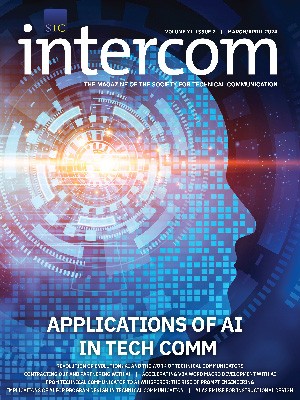By Richard Worrell, Enterprise Product Manager, Quark Software
The key to a successful low-code/no-code execution for all regulated and procedural content workflows is a componentized, digital-first approach to content with user-friendly authoring tools, underpinned by a flexible smart content schema that’s both open and customizable.
Every organization uses data insights to drive digital transformation and meet internal and external stakeholder demands. Since content is the consumable form of data, harnessing the power of your content that flows inside and outside the business, and can include standard operating procedures, white papers, videos, marketing materials, legal documents to name a few, is vital for success in today’s modern age. To win in markets, organizations must have an omnichannel publishing strategy that allows you to create content once and publish instantaneously through multiple channels while ensuring content is accurate, personalized, and meets business and regulatory compliance requirements.
Yet, many organizations struggle with their content strategies (from creation to consumption) simply because enterprise content has evolved from print to supporting all things digital. This creates continuity challenges for teams responsible for creating, managing, and publishing content.
Organizations today have an opportunity to modernize their content technology stack by implementing low-code/no-code technologies to make the authoring and publishing processes of technical content simpler, while fueling successful enterprise content agility. Low-code/no-code technologies improve content creation workflows and eliminate time consuming, error-prone manual processes.
What makes low-code/no-code technologies a must have for successful content management strategy?
To be successful in today’s digital era, your content must be personalized and reach the right audience at the right time via their preferred device of consumption. But before they get to the publishing part, organizations must first look inward at their content creation strategies. Enterprises typically have multiple subject-matter experts (SMEs), working in silos as they create content. In many cases, they are developing duplicate forms of content that contain outdated information, don’t meet regulatory requirements (that differ by industry and geography), or worse, are not the type of content the intended recipient wants. These inefficient processes, many times anchored by manual processes, will not support business growth.
Traditional publishing workflows result in every one-off document straining creative resources and creating bottlenecks. Adding low-code/no-code authoring technologies into your content operations technology stack allows content authors to create controlled, compliant components, while continuing to use the technologies they are accustomed to using.
Today’s progressive low-code/no-code tools deliver these capabilities within a familiar, user-friendly interface, and in some cases, even Microsoft Word. No DITA or XML expertise or training is required, as built-in XML tagging generates the information your content creator is looking for. SMEs benefit from authoring capabilities that allow them to extend the life of an asset. They can also transform a multi-page document into different formats such as print, web, and mobile, with the peace of mind that content components for reuse are the most accurate and up to date, as they are stored in a central repository called a Component Content Management System (CCMS). This eliminates version control issues while extending content component reuse across the wider content ecosystem of the organization.
Low-code/no-code structured authoring cuts through the complexity of producing technical content. In technical documentation, several structures may be in place, such as parts, chapters, divisions, subdivisions, citation boxes, and more, that are used inconsistently by subject-matter experts. It can be tricky to ensure all authors conform to a universal structure and taxonomy. This is exemplified in the legal industry, where defined terms are heavily used and can often be stored in multiple glossaries. It’s difficult to govern the content and ensure consistency, accuracy, and compliance—especially when it comes to cross-referencing and amendments. New amendments are often compiled outside of the core document, to be manually applied to all documentation that contains the previous version. Without a simple user interface and a componentized content structure to automate this global update process, it would be a painful copy/paste experience, which is rife for human error and legal repercussion.
Supercharging workflow efficiencies
Low-code/no-code technologies eliminate time-consuming, error-prone manual processes. Traditional content creation processes piece together long, static blocks of content into a document. If a SME is looking for a portion of that content for another corporate asset, authors must search for it, copy, and then paste it into a new document. Not only is this process time consuming, but it also poses serious risk to your company if the content is not current, personalized, or compliant.
Low-code/no-code technology makes it simple to create reusable content components that are tagged with XML metadata that your content operations system can easily interpret. Document templates automate layout and formatting rules and dynamically link through to contributory assets to eliminate manual cutting and pasting for items such as tables, images, charts, and video files. SMEs create structured content components that are modular, meta driven, and compliance controlled. They can see how their content looks in each output format without having to wait for creative teams to assemble layouts. This supports an organization’s ability to reduce its content publishing timeline from weeks to mere seconds.
The potential to automate unstructured, monolithic content is very limited. The alternative is to have a modularized strategy that allows for the creation of reusable content components with auto-generated XML metadata. Otherwise, it’s virtually impossible for a computer to perform intelligent automation of content. This encompasses the ability to create and store content that adheres to approved business formats and output procedures. It also acts as a central management location of glossary definitions and terms and ensures content published is localized, regionalized, and personalized.
Scale translation and regionalization strategies
Content must scale to support customers and prospects across the world. It must be localized, personalized, and compliant. Regulatory compliance encompasses a very defined quality of procedures that varies by industry and global region. Each company must adhere to quality policies, procedures, and forms that not only apply to their products but also ensure they are conducting business in an ethical manner. Low-code/no-code technologies play a key role in supporting your business’s regionalization and localization efforts.
Just like the legal sector, the pharmaceutical and life sciences industries face the challenge that local authorities and jurisdictions enforce their regulations differently. Life sciences companies are required to submit their applications and reports differently depending on where in the world these companies want to market their medicines and technology. This can mean a deep branching tree of variable content to meet local regulations, local languages, and their preferred file submission formats.
Pharmaceutical product labels are a prime example. Local health authorities define exactly how pharmaceutical companies should submit their product labels for approval. It’s a fixed, non-negotiable template layout that must be conformed to, containing important information about the strength, form, and positive and negative effects of each medicine for patients and prescribers. Medical device instructions for use and user manuals are considered as labels too, and similarly require highly technical layouts to be maintained and used.
Through a combination of content, properties, workflow, and security, low-code/no-code content management applications and platforms help all types of compliance-controlled organizations stay on top of their labelling content, automating it from centralized product data sheets into local labels in local languages.
The key to a successful low-code/no-code execution for all regulated and procedural content workflows is a componentized, digital-first approach to content with user-friendly authoring tools, underpinned by a flexible smart content schema that’s both open and customizable. The schema should be configurable without coding and be in a non-proprietary, simple ASCII format for easy access and processing by other open source and commercial products, with the XML complexity hidden from the content authors and SMEs. Whether they will be using Microsoft Word or a web authoring tool, the writers would not have to work any harder or longer—albeit a little differently—than they did in a pure word processing application, which allows them to focus purely on writing. The difference is, their content will be full of semantically rich detail that any human, or more importantly an automated system, can understand. It can be leveraged across a potentially enormous ecosystem that not only streamlines translation and regionalization, but also integrates with AI and ML technologies for further workflow simplicity and augmentation of content quality and diversity.
Enhancing content maturity with low-code/no-code: A customer use case
A leading publisher and supplier of training and technical information for automotive professionals in Europe recently streamlined its content operations workflows and reaped the benefits of low-code/no-code technology deployment. The company’s core business is the research, compilation, and creation of technical documentation for use in independent automotive workshops for the maintenance and repair of vehicles.
They were faced with the challenge of moving from paper manuals to a more fast-paced production cycle imposed by technology developments in the industry. They had to keep up with regular monthly updates of their technical documentation, which at present make up a large percentage of their sales.
The secret to the company’s success in delivering accurate and comprehensive documentation for automotive professionals lies in its skilled technical writers who have “hands-on” experience in the workshop and can therefore produce rigorous, yet user-friendly information.
The company experienced a drastic shift from paper-based products to electronic media. Ever higher processing demands for electronic publishing, new products, and languages exposed the limitations of the SGML-based markup they had developed and used. Some issues were caused by inconsistent use of tags, such as tags containing formatting information and tags not having an end delimiter. Other problems derived from the method of text creation. It still placed the responsibility of inserting the correct codes into the file with the author. Investment in training for technical writers was substantial too and still, did not always produce the levels of accuracy needed.
Adopting a low-code/no-code XML approach allowed the company to produce documentation in a collaborative environment, streamline the workflow, and reduce the possibility of human mistakes. Authors do not have to get involved in the technicalities of the markup language, and the company was able to further improve the effectiveness of their production cycle, making it simpler to reuse and repurpose content components for faster delivery of documentation.
With XML they were able to rely on a consistent document format to preserve accuracy. Technical writers can concentrate on the creation of accurate, timely, and effective content without having to use precious hours learning and managing metadata markup tags and template formatting. They can produce XML-based content without formal XML or schema architecture training. The company has digitally transformed its technical authoring processes and now produces consistent content for omnichannel publishing.
Conclusion
Low-code/no-code technologies allow content creators across the business to focus on what they do best—create content that is reusable. It supports authors’ ability to move from creating content locked into a specific document and format to creating reusable content components that fuel your organizations’ ability to meet customer demands and be successful in today’s digital era.
 Richard Worrell is enterprise product manager at Quark responsible for driving product strategy, innovation and adoption of content automation and intelligence solutions to support every stage of content lifecycle management for large organizations.
Richard Worrell is enterprise product manager at Quark responsible for driving product strategy, innovation and adoption of content automation and intelligence solutions to support every stage of content lifecycle management for large organizations.


